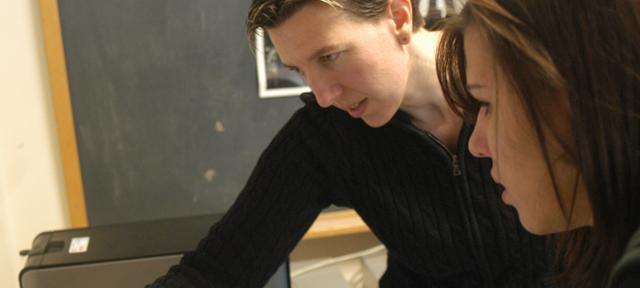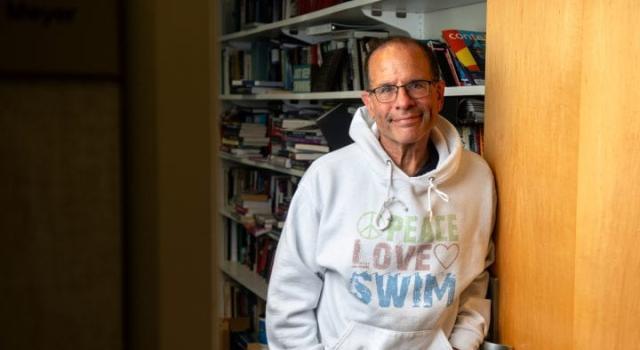Dean Couperus Creating National Model for Teaching Brain Imaging

Undergrads around the country will soon benefit from a curriculum on brain-imaging neuroscience technology developed at Hampshire, thanks to a National Science Foundation (NSF) grant recently awarded to a team including Jane Couperus, dean of the School of Cognitive Science and associate professor of developmental cognitive neuroscience.
The NSF awarded $600,000 through its Improving Undergraduate STEM Education program to Couperus and two colleagues, lead researcher Cindy Bukach, at the University of Richmond, and co-primary investigator Cathy Reed, from Claremont McKenna College. The three professors will collaborate to develop a curriculum that will make electroencephalography/event-related potentials (EEG/ERP) brain-imaging technology comprehensible to undergraduate students, and they'll also hire students as research associates to help develop the training.
“We wanted a grant to explore the best ways to teach EEG/ERP technology at small or primarily undergraduate institutions, and to develop materials to train students in places that don’t have the resources to purchase this equipment,” says Couperus. “ERP is really effective for teaching undergraduates how to do brain imaging, and to get students interested in STEM. Knowing this technology can give them a leg up for graduate research, internships, and jobs.”
Hampshire is one of the few liberal arts colleges where students can lead their own research in brain activity. In the Event-Related Potential (ERP) Lab, students analyze electroencephalograms of research participants, to learn about the timecourse and general location of brain activity related to specific tasks. An EEG records the electrical activity produced by the brain through electrodes placed on a person’s scalp. ERP is a specific use of this technology to record how that electrical activity is produced in response to prompts. Students learn this technology in classes, and then can support faculty research or design their own experiments or research projects.
The College will receive $154,367 of the NSF funding to both develop educational tools and purchase the latest version of the technology.
Bukach and Reed met during an ERP Boot Camp at the University of California Davis led by Steve Luck, director of that college’s Center for Mind and Brain. They wanted to design a course that was available to undergrads, and mentioned to Luck that although the material he had was good for faculty and graduate students, it wasn’t at a level that undergrads would understand.
“He recommended that we contact Jane,” says Reed. “We found out then that she did amazing research, and that she had been working with EEG/ERP on the undergraduate level for ages.”
Their collaboration gives Couperus the opportunity to use her years of experience at Hampshire to assist other schools and their students with incorporating the technology and to push the traditional bounds of undergraduate research.
“There are currently no resources on how to teach EEG/ERP technology for undergraduates,” says Couperus. “This technology is usually used in big research universities, not small liberal arts colleges.”
Students, Couperus says, will be deeply involved in the process, as the grant enables her to hire several as undergraduate research associates, who will collect data and help develop and test the proposed teaching materials. She has already collaborated with Owen Neuberger, a recent graduate of Hampshire’s animation program, to produce a training video among materials that make learning more engaging.
REFERENCE LINKS
School of Cognitive Science
Culture, Brain and Development Area of Study
Jane Couperus works with a student.



